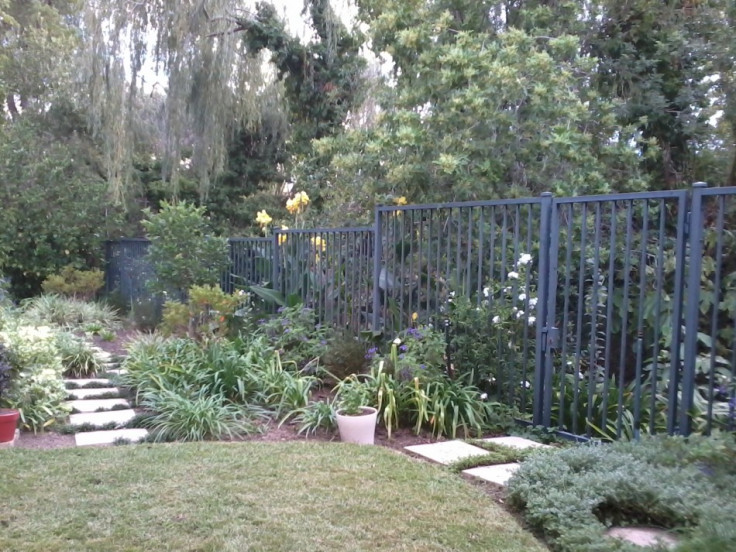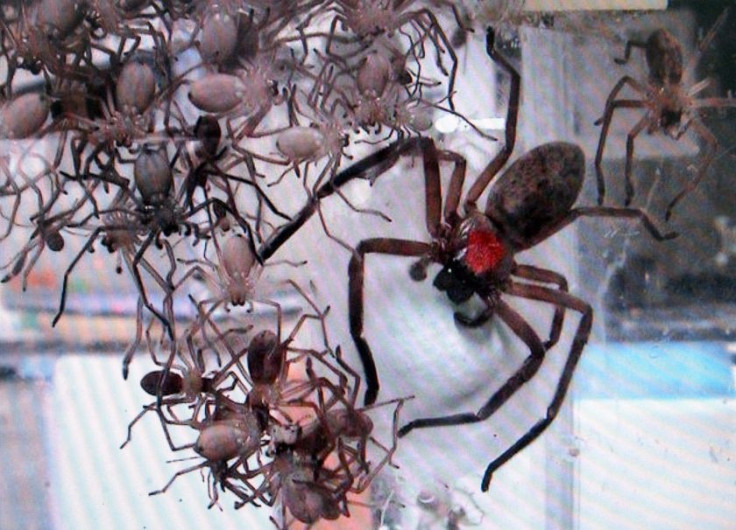My South African Adventure: Wild Times with Violin Spiders, Goshawks - and Squirrels
From venomous spiders to stunning dragonflies, even a back garden can become a magical mystery tour

One of the things that I love to do here is meditating outside in the garden, when the weather's good enough, that is.
But being autumn in the Cape region, it's a bit all over the place at the moment, so it's not an everyday occurrence. There tends to be a couple of days of rain, shadowed by a few of overcast dullness, followed by one or two of sunshine, with temperature fluctuations of on average about 10 degrees Celsius in between. Very confusing - and a veritable nightmare in wardrobe terms.
Anyway, one of the things about sitting outside on your yoga mat on the lawn, closing your eyes and focusing inwards is that, when you open them again and focus outwards, you're much more inclined to notice the little things that may otherwise pass you by.
Like a beautiful, blue dragonfly resting for a moment on a leaf before floating delicately off on the breeze. Or little ants scurrying around industriously, performing their allotted role as nature's cleaner-uppers. Or tiny, black spiders spinning their glistening webs on your coriander plant.
Counterintuitively in South Africa though, it's the smaller spiders that you've got to watch out for rather than the big ones, although there are apparently only four venomous arachnids in the country overall.
First off is the violin spider, the bites of which cause hideously painful ulcerating blisters, followed eventually by tissue breakdown. Oh joy. Then there's the yellow sac spider. Their bites have similar symptoms and are the most common as people have a habit of rolling over on them in bed when the creatures have gone walkabout. Nice.
But there's also the little, black button spider, which can be identified by the red splodge on its back. Its venom causes profuse sweating and shaking, raised blood pressure and all-over muscle pain and cramps. Lovely.
And last but by no means least is the sand crab spider, which is potentially deadly, but luckily only tends to be found in arid rather than fecund wine-growing areas.
Rain spiders
So if you're unlucky enough to have a chunk taken out of you by one of the above, the general advice is to try and establish exactly what it was that got you and to take yourself off to the nearest hospital as soon as possible for a shot of anti-venom. Or, if none exists, at least get a dose or two of antibiotics in order to keep the necrosis at bay.
We had a spider experience recently that terrified the life out of us both though. Although decidedly undeadly, my beloved and I strolled nonchalantly into the spare room to be greeted by a black monster the size of my fist, literally, sitting possessively on the white wooden blinds.
It was a rain spider as they're called here, or a huntsman as they're known in Australia, and I was already familiar with the things after an aggressive female, allegedly protecting her egg sac, chased my mum around the front room of my brother's beautiful, old Queenslander house in Brisbane where they lived at the time. Not good.
When my beloved and I screamed and ran though, slamming the door behind us, the poor old rain spider seemed to take fright as well and disappeared, only to be discovered by our "maid", who comes in weekly to do the cleaning, ironing and such like, a few days later. It was sitting on the wall of the utility room, looking as terrifying as ever.
Much to my horror, as they're pretty harmless and had never done anything to us, the maid quickly dispatched it with insect spray and summarily poked its corpse out of the door with an ostrich feather duster. A rather unseemly end, I thought, for what was after all a magnificent, if rather disturbing, beast.

Anyway, back to the garden, which we regularly share with those most spirited of creatures, the squirrels. The ones here are a funny mixture in shade between the greys of US origin and the UK's native browns, and they're constantly rustling around in the undergrowth in a somewhat sinister fashion, running up trees and along our fence and generally expending vast amounts of energy.
They don't seem particularly scared or nervous about humans either. On opening my eyes after one meditation, I found one burying her acorn in the herb garden, mere inches away from my feet. I could almost have reached out and touched her. She was so caught up in her task that I barely think she noticed me, bless her, even as she was patting everything neatly down.
Our feathered friends
But squirrels aren't the only visitors. We've also got friends of a more feathered variety that make periodic appearances too. There are the inevitable sparrows, Karoo thrushes, and even the odd hadeda ibis stalking around and poking its long, sharp beak into the ground to try and root out earthworms and various tasty insects.
I've also seen a goodly number of helmeted guinea fowl poking about too. I'm sure they wouldn't be flattered by the description, but they look as if a headhunter has been at them - their tiny blue and red bonces appear to have been shrunk and are wildly out of proportion with the rest of their big, fat bodies, poor things. They're certainly wouldn't win a beauty contest.
Surprisingly, given their girth though, they can run at a rate of nots if startled, but with a brain the size of a pea, I wouldn't expect them to be getting into Mensa any time soon.
Most amazing of all though is our resident African goshawk that we've named Esme. The reason that it's amazing is that it's apparently pretty rare to see them as they're shy and generally avoid habited areas (not that I would know myself, but my beloved is well into birds, and raptors in particular).
But we're lucky enough to have a little river and what is, for all intents and purposes, a small rainforest on the other side of our fence so there's obviously cover enough to make her feel safe.
And so one Friday evening, a few weeks ago when the weather was still warm enough to enjoy sitting outside and relaxing with a glass of wine before dinner, we just happened to look over and there she was. Just sitting on a branch on the other side of the stream as bold as brass.
She must have stayed there for a good 10 minutes, before some small bird caught her eye and off she zoomed to get some dinner of her own. Beautiful. We've been keeping a watchful eye out for her ever since but, while we may not have been lucky enough to spot her again, we do sometimes hear her mewing.
Simple pleasures. And the fact that they're among the happiest may definitely be something else worth meditating on too.
READ:
My South African Adventure: Forgetting Britain in the Big Freeze [BLOG]
My South African Adventure: Keep 'Em Safe Drug Abuse Campaign [BLOG]
My South African Adventure: Grape Expectations in Land of Wine [BLOG]
My South African Adventure: Over-the-Top Security is Safe as Houses [BLOG]
My South African Adventure: Kraal Gallery, 102faces.com and 2people1life.com Seize the Day [BLOG]
My South African Adventure: Oscar Pistorius is the Talk of the Braai [BLOG]
My South African Adventure: Technology-Starved Amish Lifestyle is not for Me [BLOG]
Cath Everett is a resting journalist who has written about business, technology and HR issues for over 20 years. She recently moved from the UK to South Africa with her husband.
© Copyright IBTimes 2025. All rights reserved.




















